Why Are Coaxial Calibration Kits Critical for Maintaining Vector Network Analyzer Performance?
Vector Network Analyzers (VNAs) represent the pinnacle of precision measurement technology in the microwave and RF industry, serving as indispensable instruments for characterizing complex electrical networks. However, the accuracy and reliability of these sophisticated devices fundamentally depend on proper calibration procedures that eliminate systematic errors and ensure measurement integrity. Coaxial Calibration Kits emerge as the cornerstone of this calibration process, providing the reference standards necessary to establish measurement traceability and maintain optimal VNA performance across diverse applications spanning satellite communications, aerospace systems, and telecommunications infrastructure. The significance of coaxial calibration extends beyond mere measurement accuracy, encompassing the broader operational reliability of critical systems where precision matters most. When VNAs operate without proper calibration using high-quality Coaxial Calibration Kits, measurement uncertainties can cascade through entire system designs, leading to performance degradation, increased development costs, and potential system failures in mission-critical applications. Understanding the pivotal role these calibration standards play in maintaining VNA performance becomes essential for engineers and technicians working across industries where measurement precision directly impacts system reliability and operational success.
How Coaxial Calibration Kits Eliminate Systematic Errors in VNA Measurements?
Understanding the Sources of VNA Systematic Errors
Vector Network Analyzers inherently introduce systematic errors during the measurement process due to imperfections in their internal components, cable assemblies, and connector interfaces. These errors manifest as directivity errors, source match errors, load match errors, isolation errors, frequency response errors, and tracking errors that collectively compromise measurement accuracy. Coaxial Calibration Kits address these systematic errors by providing precisely characterized reference standards that enable the VNA to mathematically correct for these known imperfections. The calibration process involves measuring known standards with precisely defined electrical characteristics, allowing the VNA to establish correction coefficients that compensate for systematic errors during subsequent measurements. Advanced Microwave Technologies Co., Ltd supplies Coaxial Calibration Kits with meticulously characterized standards including open circuits, short circuits, matched loads, and through connections that serve as reference points for error correction algorithms. These standards undergo rigorous testing using state-of-the-art measurement equipment capable of operating up to 110 GHz, ensuring traceability to international measurement standards. The precision manufacturing processes employed in producing these calibration standards guarantee that their electrical characteristics remain stable over extended periods, providing consistent reference points for VNA calibration procedures across diverse environmental conditions and operational scenarios.
Mathematical Error Correction Through Calibration Standards
The mathematical foundation of VNA error correction relies on the precise knowledge of calibration standard characteristics provided by high-quality Coaxial Calibration Kits. When a VNA measures calibration standards with known electrical properties, it can determine the error coefficients that describe the systematic errors present in the measurement system. These error coefficients form the basis for mathematical correction algorithms that transform raw measurement data into accurate representations of device under test characteristics. The accuracy of this correction process directly depends on the precision and stability of the calibration standards, making the quality of Coaxial Calibration Kits paramount to measurement reliability. Modern VNA calibration procedures employ sophisticated error correction models such as Short-Open-Load-Through (SOLT), Through-Reflect-Line (TRL), and Line-Reflect-Reflect-Match (LRRM) calibrations that utilize different combinations of calibration standards. Coaxial Calibration Kits from Advanced Microwave Technologies provide all necessary standards for these calibration methods, featuring frequency ranges extending from DC to 50 GHz with exceptional connector compatibility including SMA, N-Type, 3.5mm, and 2.92mm interfaces. The robust construction and corrosion-resistant materials ensure long-term stability of these standards, maintaining calibration accuracy over thousands of measurement cycles while operating across temperature ranges from -40°C to +85°C.
Long-term Stability and Measurement Traceability
The long-term stability of Coaxial Calibration Kits directly impacts the sustained accuracy of VNA measurements over extended periods. High-quality calibration standards maintain their electrical characteristics within specified tolerances despite repeated use, environmental exposure, and mechanical stress associated with routine calibration procedures. This stability ensures that measurement traceability remains intact, providing confidence in measurement results for quality assurance, research and development, and production testing applications. Advanced manufacturing techniques and material selection processes employed in producing premium calibration standards result in minimal drift of electrical parameters over time, reducing the frequency of recalibration requirements and associated operational costs. The traceability chain connecting VNA measurements to international standards depends critically on the accuracy and stability of Coaxial Calibration Kits used in the calibration process. Advanced Microwave Technologies maintains rigorous quality control procedures throughout the manufacturing process, ensuring that each calibration kit meets or exceeds industry standards for electrical performance and mechanical reliability. The ISO 9001:2015 certification demonstrates the company's commitment to consistent quality management practices, while RoHS compliance ensures environmental responsibility in product manufacturing. This combination of technical excellence and quality assurance provides users with confidence that their VNA calibrations maintain measurement traceability and support reliable decision-making in critical applications.
The Impact of Precision Calibration on Measurement Accuracy
Quantifying Measurement Uncertainty Reduction
Precision calibration using high-quality Coaxial Calibration Kits dramatically reduces measurement uncertainty by eliminating or significantly minimizing systematic error contributions that would otherwise dominate measurement results. The magnitude of uncertainty reduction depends on the quality of calibration standards, the appropriateness of the calibration method for the specific measurement application, and the stability of the measurement environment. Well-executed calibration procedures can reduce measurement uncertainties by orders of magnitude, transforming VNAs from instruments with limited accuracy into precision measurement systems capable of characterizing devices with exceptional fidelity. The quantitative impact of precision calibration becomes particularly evident in applications requiring high measurement accuracy, such as characterizing low-loss microwave components, precision attenuators, and high-quality filters. Advanced Microwave Technologies' Coaxial Calibration Kits enable measurement uncertainties at the level of a few hundredths of a decibel for magnitude measurements and fractions of a degree for phase measurements across frequency ranges extending to 50 GHz. This level of precision supports demanding applications in satellite communications where signal integrity directly impacts system performance, aerospace applications where component reliability affects mission success, and telecommunications infrastructure where network performance depends on accurate component characterization.
Frequency-dependent Calibration Accuracy
The frequency response of VNA measurements exhibits complex dependencies on systematic errors that vary significantly across the instrument's operating frequency range. Low-frequency measurements may be dominated by connector repeatability and cable stability issues, while high-frequency measurements often suffer from connector insertion loss variations and dimensional tolerances that become more significant as wavelengths approach connector dimensions. Coaxial Calibration Kits address these frequency-dependent error sources by providing calibration standards with well-characterized frequency responses that enable accurate error correction across the entire measurement bandwidth. Modern microwave and RF applications increasingly operate at millimeter-wave frequencies where traditional calibration approaches may prove inadequate due to increased sensitivity to mechanical tolerances and environmental variations. High-frequency Coaxial Calibration Kits incorporate advanced design techniques and precision manufacturing processes that maintain calibration accuracy at frequencies approaching 50 GHz and beyond. The compact design and robust construction of these calibration standards minimize parasitic effects and mechanical variations that could compromise calibration accuracy at high frequencies, ensuring reliable VNA performance across the full spectrum of modern microwave applications.
Dynamic Range and Sensitivity Improvements
Proper calibration using precision Coaxial Calibration Kits significantly enhances VNA dynamic range and measurement sensitivity by removing systematic error floors that would otherwise limit the instrument's ability to measure small signals or high-isolation devices. Uncalibrated VNA measurements often exhibit apparent signal levels that represent systematic errors rather than actual device characteristics, creating false floors that prevent accurate measurement of high-performance components. Effective calibration removes these error floors, revealing the true dynamic range capabilities of the VNA and enabling measurements of devices with exceptional isolation or very low insertion loss. The enhanced sensitivity resulting from precision calibration proves particularly valuable in applications involving passive microwave components such as filters, couplers, and isolators where small signal variations can significantly impact system performance. Advanced Microwave Technologies' calibration solutions enable VNA measurements with dynamic ranges exceeding 120 dB, supporting characterization of components with isolation levels that would be unmeasurable without proper calibration. This enhanced measurement capability supports demanding applications in defense radar systems where component isolation directly affects system sensitivity, and in communication systems where filter performance determines signal quality and interference rejection.
Industry Applications Where Calibration Accuracy Determines System Performance
Satellite Communication System Requirements
Satellite communication systems operate under extremely demanding conditions where component performance directly impacts link reliability, data throughput, and service quality across vast distances. The harsh space environment, limited power budgets, and inaccessibility for maintenance make component characterization and qualification critically important for mission success. Coaxial Calibration Kits enable precise measurement of satellite communication components including low-noise amplifiers, high-power amplifiers, filters, and antenna feed networks that must meet stringent performance specifications while maintaining reliability over mission lifetimes extending multiple years. The frequency coordination requirements for satellite systems necessitate extremely accurate characterization of component frequency responses to prevent interference with adjacent satellite services and terrestrial communication systems. Advanced Microwave Technologies provides Coaxial Calibration Kits specifically designed for satellite communication applications, featuring frequency coverage extending across multiple satellite bands including L-band, S-band, C-band, X-band, Ku-band, and Ka-band frequencies. The exceptional frequency accuracy and stability of these calibration standards support measurements with the precision required for satellite system coordination and regulatory compliance while ensuring optimal system performance throughout the mission lifetime. Ground station equipment for satellite communications requires equally precise calibration to maintain link budgets and ensure reliable communication with orbiting satellites. The large antenna systems and high-power amplification equipment used in ground stations present unique calibration challenges due to their size, complexity, and operational environment. Specialized Coaxial Calibration Kits designed for ground station applications provide the accuracy and stability necessary to characterize these systems while operating under varying environmental conditions including temperature fluctuations, humidity variations, and mechanical vibrations that could otherwise compromise measurement accuracy.
Aerospace and Defense Radar Applications
Military and civilian radar systems rely on precisely characterized microwave components to achieve required detection ranges, resolution capabilities, and target discrimination performance. The complex signal processing algorithms used in modern radar systems assume accurate knowledge of component characteristics including gain, phase response, and group delay that can only be obtained through precise VNA measurements using high-quality Coaxial Calibration Kits. Errors in component characterization can lead to degraded radar performance including reduced detection range, increased false alarm rates, and compromised target tracking accuracy that directly impact mission effectiveness. Advanced radar systems operating at millimeter-wave frequencies present particularly challenging calibration requirements due to increased sensitivity to connector tolerances, cable stability, and environmental variations. The high-frequency Coaxial Calibration Kits provided by Advanced Microwave Technologies address these challenges through precision manufacturing techniques and advanced material selection that maintain calibration accuracy at frequencies approaching 50 GHz. The robust construction and corrosion-resistant materials ensure reliable performance in harsh military environments while maintaining the measurement traceability required for defense applications. Phased array radar systems used in modern defense applications require exceptional amplitude and phase matching between array elements to achieve required beam steering accuracy and sidelobe suppression performance. The characterization of individual array elements and feed networks demands calibration accuracy levels that can only be achieved using precision Coaxial Calibration Kits with exceptional stability and repeatability. The customization options available from Advanced Microwave Technologies enable tailored calibration solutions that address the specific requirements of phased array applications while maintaining compatibility with existing test equipment and procedures.
Telecommunications Infrastructure and 5G Networks
The deployment of 5G telecommunications networks introduces unprecedented requirements for component characterization accuracy due to the advanced modulation schemes, multiple-input multiple-output (MIMO) antenna systems, and millimeter-wave frequencies employed in these systems. The complex signal processing algorithms used in 5G base stations and user equipment rely on accurate knowledge of component characteristics to achieve required data rates, coverage areas, and user capacity. Coaxial Calibration Kits enable the precise VNA measurements necessary to characterize 5G components including power amplifiers, antenna arrays, and beamforming networks that determine overall system performance. The massive MIMO antenna systems used in 5G infrastructure require characterization of hundreds or thousands of individual antenna elements and associated RF components, making calibration efficiency and repeatability critically important for practical deployment. Advanced Microwave Technologies' calibration solutions support high-throughput measurement applications through robust construction that maintains accuracy over thousands of measurement cycles and quick-connect interfaces that minimize calibration time while maximizing measurement reliability. The versatility of these calibration standards enables their use across multiple frequency bands and connector types commonly encountered in 5G infrastructure deployment. Network densification strategies employed in 5G deployment require precise characterization of small cell equipment and distributed antenna systems that operate in challenging RF environments with significant interference and multipath propagation effects. The accurate measurement of these systems requires calibration standards with exceptional stability and immunity to environmental variations that could otherwise compromise measurement accuracy. The operating temperature range of -40°C to +85°C provided by Advanced Microwave Technologies' Coaxial Calibration Kits ensures reliable calibration performance across the environmental conditions encountered in outdoor telecommunications infrastructure while maintaining the measurement accuracy required for optimal network performance.
Conclusion
The critical importance of Coaxial Calibration Kits in maintaining Vector Network Analyzer performance cannot be overstated, as these precision instruments serve as the foundation for accurate microwave measurements across industries where precision directly impacts system reliability and operational success. From eliminating systematic errors through mathematical correction algorithms to enabling the measurement accuracy required for satellite communications, aerospace radar systems, and 5G telecommunications infrastructure, high-quality calibration standards represent an essential investment in measurement capability and system performance.
Advanced Microwave Technologies Co., Ltd stands ready to support your precision measurement requirements with over 20 years of experience in microwave technology and a comprehensive range of ISO-certified, RoHS-compliant Coaxial Calibration Kits designed to meet the demanding requirements of modern applications. Our perfect supply chain system, rich production experience, and professional technical R&D team ensure fast delivery and competitive pricing while maintaining strict quality control and providing strong after-sales capability. Whether you require standard calibration solutions or customized products tailored to specific applications, our integrated production and R&D capabilities support global export requirements with the technical excellence you demand. Don't let measurement uncertainty compromise your system performance. Contact our expert team today at craig@admicrowave.com to discuss your calibration requirements and discover how our advanced Coaxial Calibration Kits can enhance your VNA measurement capabilities. With our quick prototyping services, comprehensive technical support, and efficient manufacturing processes, we provide the customized solutions and expert guidance you need to achieve measurement excellence in your critical applications.
References
1.Rytting, D. K. (2001). "Network Analyzer Error Models and Calibration Methods." Hewlett-Packard Application Note, RF and Microwave Measurement Symposium and Exhibition.
2.Ferrero, A., & Pisani, U. (1992). "Two-Port Network Analyzer Calibration Using an Unknown 'Thru'." IEEE Microwave and Guided Wave Letters, 2(12), 505-507.
3.Marks, R. B. (1997). "A Multiline Method of Network Analyzer Calibration." IEEE Transactions on Microwave Theory and Techniques, 45(7), 1205-1215.
4.Silvonen, K. J. (1999). "LMR 16 - A Self-Calibration Procedure for a Leaky Network Analyzer." IEEE Transactions on Microwave Theory and Techniques, 47(11), 2162-2168.
5.Stumper, U. (2006). "Influence of Calibration Standards on VNA Measurement Uncertainty." IEEE Transactions on Instrumentation and Measurement, 55(2), 523-530.
6.Williams, D. F., Hale, P. D., & Remley, K. A. (2003). "The Sampling Oscilloscope as a Microwave Instrument." IEEE Microwave Magazine, 4(4), 59-68.
YOU MAY LIKE
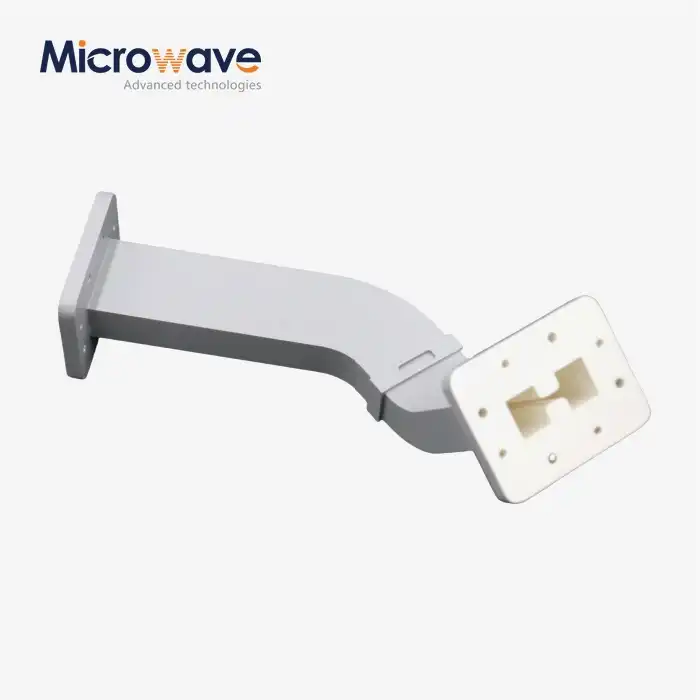 VIEW MOREDouble Ridge Waveguide Bend
VIEW MOREDouble Ridge Waveguide Bend VIEW MOREDouble Ridge Twist Waveguide
VIEW MOREDouble Ridge Twist Waveguide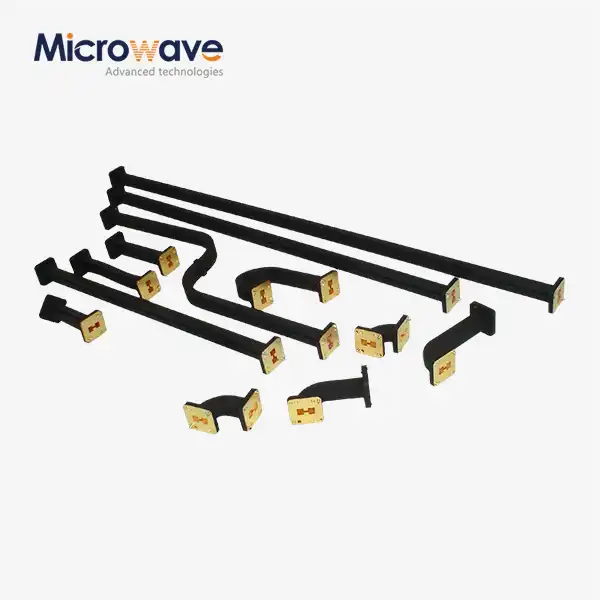 VIEW MOREDouble Ridged Flexible Waveguide
VIEW MOREDouble Ridged Flexible Waveguide VIEW MOREDouble-Ridged Waveguide Magic Tee
VIEW MOREDouble-Ridged Waveguide Magic Tee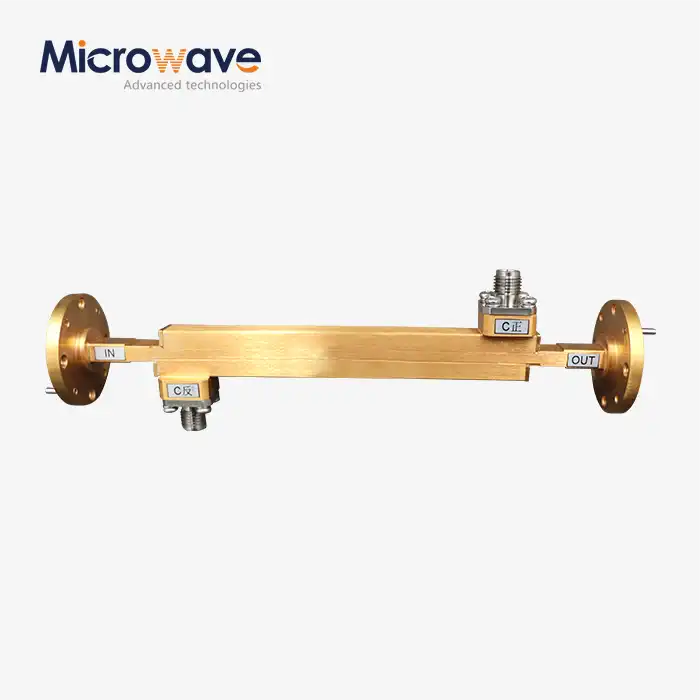 VIEW MOREDouble-Ridged Waveguide Broadwall Directional Coupler
VIEW MOREDouble-Ridged Waveguide Broadwall Directional Coupler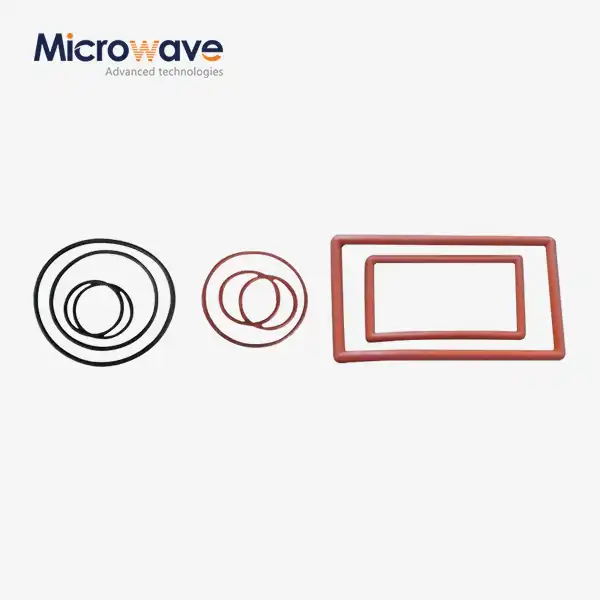 VIEW MOREWaveguide Flange Gasket
VIEW MOREWaveguide Flange Gasket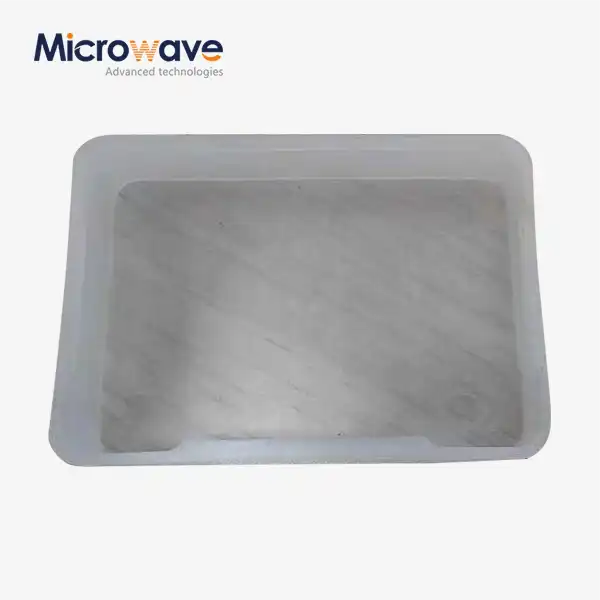 VIEW MOREPlastic Flange Caps
VIEW MOREPlastic Flange Caps VIEW MOREWaveguide Adjustable Support
VIEW MOREWaveguide Adjustable Support




